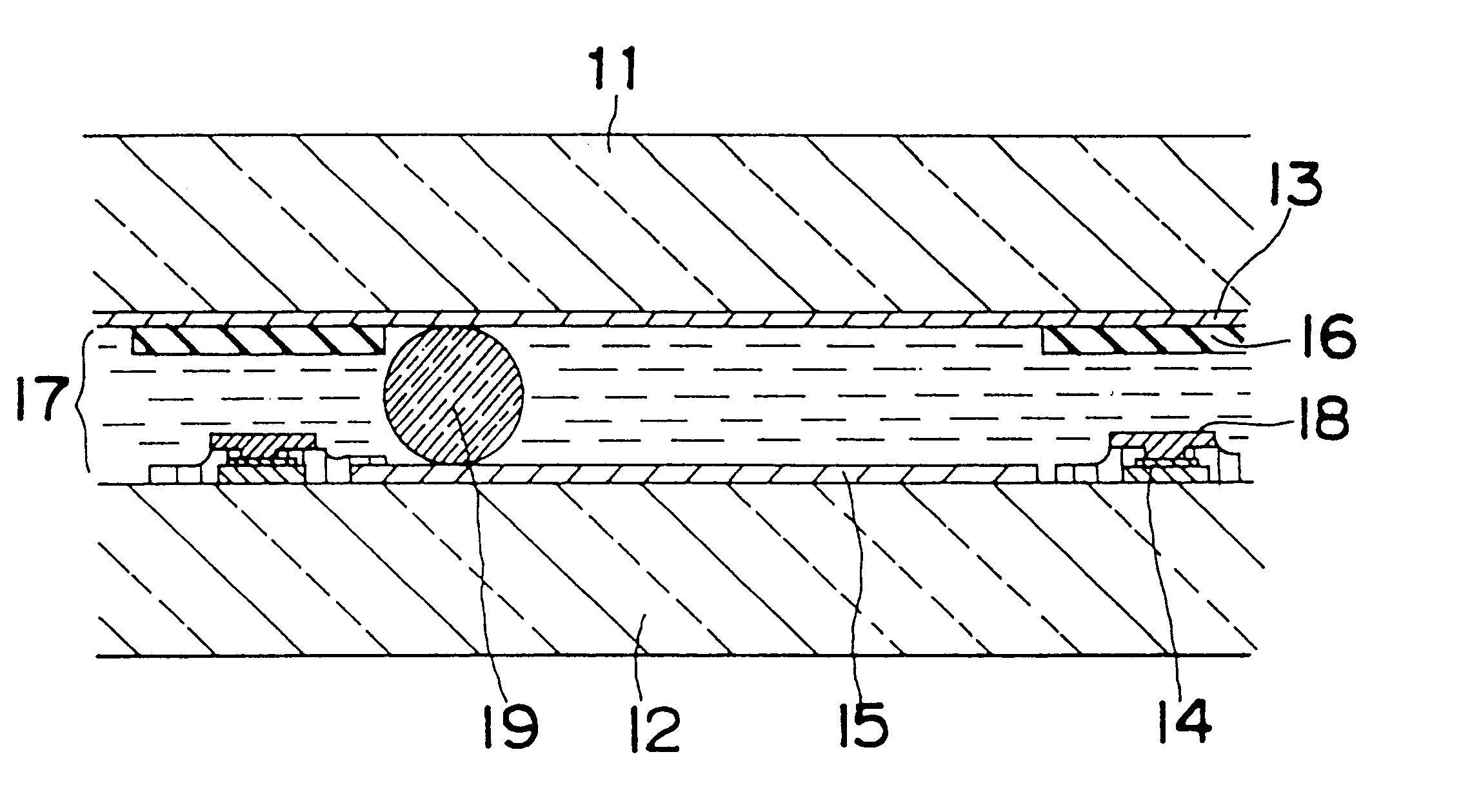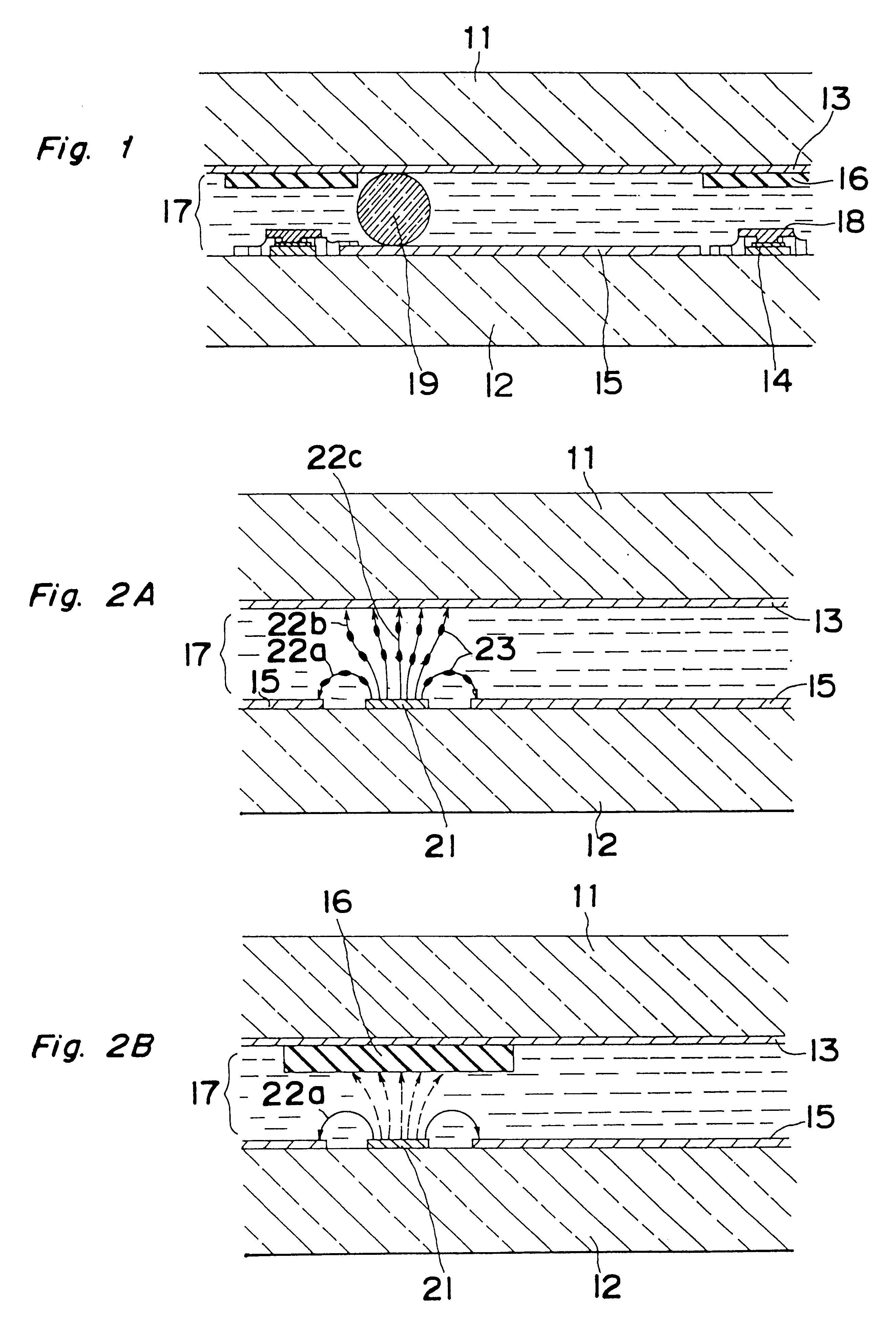However, the liquid crystal display panel has difficulty in securing a relatively large display format and, therefore, a compromise has been made to incorporate the liquid crystal panel in a projection type display device of a type employing an optical system for projecting images generated by the liquid crystal panel onto a screen.
Passage of light through the display region of the TN liquid crystal display panel suffices, and light transmitted from somewhere other than the display region of the TN liquid crystal display panel is of no use and may constitute a cause of darkening of images being displayed.
Also, any error in fitting the TN liquid crystal display panel to the chassis through the printed circuit board may result in leakage of light from one end while the opposite end will shield a portion of the display region of the display panel.
This means that only about 25% of the total light incident upon the TN liquid crystal display panel is utilized effectively and, accordingly, the TN liquid crystal display panel has a problem in that images are apt to be displayed at a low luminance.
The use of the rubbing process results in increase of the number of manufacturing steps which in turn brings about increase in manufacturing cost.
Reduction in pixel size in turn brings about an increased number of surface irregularities per unit area resulting from signal lines, thin-film transistors and other elements.
The presence of the increased surface irregularities obviously hampers a satisfactory rubbing.
While the display panel useable in the NW mode is considered excellent in respect of color reproducibility of images being displayed, it has a problem in that light tends to leak from around each pixel.
However, this is not an effective method since the increased width of the black matrix 381 results in reduction in the area of closure of the pixels which in turn brings about reduction in luminance of the images being displayed.
Accordingly, the efficiency of utilization of light is low and the display luminance is low.
Moreover, light impinging upon the black matrix does in turn heat the display panel to an elevated temperature which subsequently brings about reduction in lifetime of the display panel as a whole.
Similarly, the projection type display device in which the TN liquid crystal display panel is used as a light valve has a low efficiency of utilization of light, accompanied by reduction in luminance of the images being projected onto the screen.
Portion of the UV-curable resin which has been radiated by ultraviolet rays of light is cured to result in phase separation between the resin component and the liquid crystal component, but the remaining portion of the UV-curable resin which has not been radiated remains uncured.
The presence of that portion of the UV-curable resin which has been left uncured adversely affects the reliability and the lifetime of the PD liquid crystal display panel.
The presence of the black matrix 381 makes it difficult to fix UV radiating conditions during the manufacture of the display panel.
As hereinabove discussed, if the black matrix 381 is formed, even the slightest change in temperature during the manufacture and the intensity of UV radiation bring about a considerable change in average particle size of the liquid crystal material overlaying the pixel electrodes or in average pore size of the polymer network overlaying the pixel electrodes, thereby imposing limitations on the manufacturing condition.
Accordingly, it is difficult to manufacture constantly the polymer dispersed liquid crystal display panels having an equal operating characteristic.
Where the polymer dispersed liquid crystal display panel is used as a light valve in the projection type display device, the presence of that portion of the UV-curable resin which has been left uncured in the display panel tends to constitute a cause of considerable deterioration in performance of the polymer dispersed liquid crystal display panel.
This appears to result from the fact that, in the projection type display device, light of an intensity of about some ten thousand luxes or higher falls on the display panel, subjecting the latter to light-induced and heat-induced stresses.
As hereinbefore discussed, in the prior art TN liquid crystal display panel, the efficiency of utilization of light is relatively low because of the use of the polarizing plate, making it impossible to accomplish a high luminance display.
Also, though the high luminance display can be attained with the polymer dispersed liquid crystal display panel, the prior art structure is instable because of that portion of the UV-curable resin remaining uncured and cannot be employed in practice.
Also, the manufacturing tolerance thereof is extremely limited, making it difficult to obtain constantly the polymer dispersed liquid crystal display panel having a high light scattering characteristic.
As hereinbefore discussed, the TN liquid crystal display panel requires the use of the polarizing plate to accomplish light modulation and is ineffective to accomplish a high luminance display because of a relatively low efficiency of unitization of light.
However, the display panel in which the polymer dispersed liquid crystal material is employed as a light modulating layer has some problems in that the retentivity is low, light leakage is apt to occur from around the pixel electrodes and secondary light scattering tends to result from scattering of light in the liquid crystal layer.
All of these problems are peculiar to a display device which utilizes as a light valve a display panel which is effective to modulate light as a function of change in light scattering.
 Login to View More
Login to View More  Login to View More
Login to View More 


